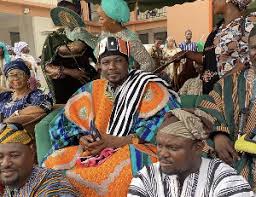The Northern Region of Ghana is a treasure trove of cultural diversity, with an impressive variety of languages spoken across its communities. Each language is a vital part of the identity of its speakers and plays a significant role in everyday life.
As we explore these languages, it is essential to recognize their role in community bonding. In many cases, people switch between languages depending on the context. For example, a speaker might use Dagbani at the market but switch to Kusaal at home. This adaptability also reflects the interconnectedness of the communities and their shared cultural heritage as well.
Moreover, the preservation of these languages is vital for future generations. Many communities are also actively working to teach their languages to the youth. Schools are incorporating local languages into their curriculums. However, this ensures that children grow up with a strong understanding of their heritage. It also fosters pride in their language and culture.
In this article, we will delve into the unique languages found in the Northern Region, examining their characteristics and the communities that speak them. Readers can expect to learn about major languages such as Dagbani and Mampruli, as well as other noteworthy languages like Gonja, Kusaal, and more.
We will also explore how these languages contribute to cultural expression and community bonding. Join us as we uncover the linguistic richness of the Northern Region and appreciate its importance in preserving local traditions.
Languages Spoken in the Northern Region
1. Dagbani
One of the most widely spoken languages in this region is Dagbani. This language belongs to the Dagombas, who primarily reside in the central part of the region. Dagbani is not just a means of communication but a vital aspect of the Dagombas’ identity. The language has a rich vocabulary and expressive phrases. For example, greetings in Dagbani can convey warmth and respect, which are important in Dagomba culture.
2. Mampruli
Transitioning from Dagbani, we encounter another significant language: Mampruli. This language is also spoken by the Mamprusi in the eastern part of the Northern Region. Mampruli is known for its distinct sound and rhythm. Many people find it rhythmic and pleasant to hear. In Mampruli-speaking communities, the language however serves as a bridge that connects family and friends.
3. Gonja
Additionally, we find Gonja, a language spoken by the Gonja people in the western part of the Northern Region. Gonja has its unique grammar and vocabulary, which sets it apart from the other languages in the area. It is also rich in proverbs and expressions, making it a colourful language. Furthermore, storytelling is a cherished tradition among Gonja speakers. They often gather to share tales in their native language, passing down history and values to younger generations. This oral tradition is essential for keeping the Gonja culture alive and vibrant.

4. Kusaal
In addition to these major languages, the Northern Region is home to several smaller languages and dialects that enrich its linguistic landscape. Kusaal, spoken by the Kusasi people, is prevalent in the northeastern part of the region. Kusaal also has its unique grammar and reflects the culture of its speakers.
5. Nanumba
Another important language is Nanumba, used by the Nanumba people in the eastern region. Nanumba has distinct phonetic features and a rich oral tradition. Speakers use it to convey stories, songs, and proverbs that reflect their way of life. As a result, the language plays a crucial role in preserving local heritage.
6. Bimoba
Bimoba is another language spoken in the southeastern areas of the Northern Region. The Bimoba people have a rich oral tradition, and their language is vibrant with stories and songs. Like the other languages, Bimoba is not just a means of communication; it is also an expression of their identity. It enables them to share their culture and values with others.
7. Dagaare
Dagaare, spoken by the Dagaaba people in the western part of the region, is known for its tonal qualities. The speakers of Dagaare take great pride in their language. They use it during community events and traditional ceremonies. This strengthens their cultural identity and fosters unity among the Dagaaba people.
8. Frafra
Another notable language is Frafra. Spoken by the Frafra people in the northern parts of the region, Frafra has a vibrant oral literature. Moreover, this language helps to connect the Frafra people with their ancestors and traditions. It serves as a reminder of their history and values.
The languages of the Northern Region of Ghana offer a fascinating glimpse into the lives of its people. Each language carries its history, culture, and identity. From Dagbani to Frafra, these languages shape the communities and connect them to their past. Understanding and appreciating these unique languages is crucial for preserving the rich cultural heritage of the Northern Region. As we continue to explore this linguistic diversity, we celebrate the vibrant tapestry of life that these languages represent.
Read Also: Top 5 Impact of Technology on Businesses in Northern Region